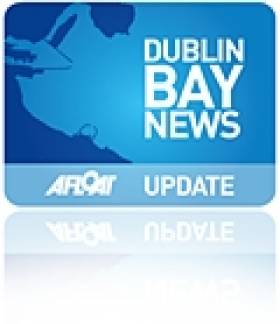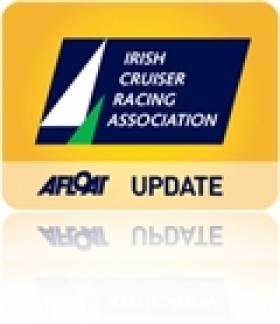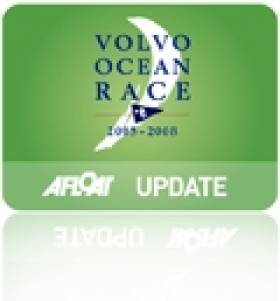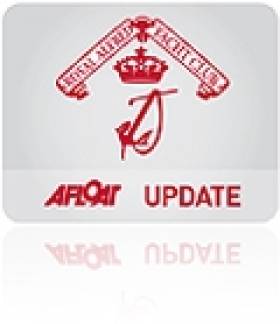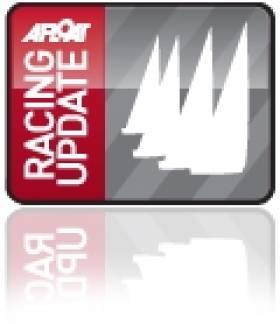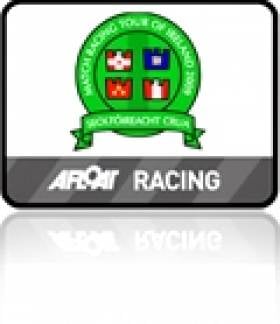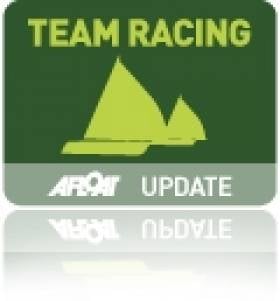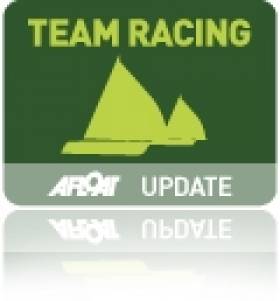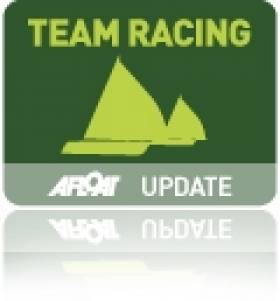Displaying items by tag: racing
Dun Laoghaire Earmarked For Stop on First MOD70 Euro Tour
#DUBLIN BAY NEWS - The inaugural European Tour for the MOD70 trimaran class is set to come to Dublin next summer, pending agreement with the relative authorities in January.
The Irish Times reports that the National Yacht Club is at the head of efforts to include an event in Dun Laoghaire on the first tour for the new 70-foot design.
But apart from the Dun Laoghaire Harbour Company, there has so far been little support from local or national authorities despite organisers waiving the €250,000 franchise fee.
John McKenna of tour organiser OC Thirdpole says he is determined to ensure Dublin is included, and that costs will be borne by the competing teams.
However, he added: "The tour needs to be assured that it will have a major public occasion in Dublin if it is to commit to coming here."
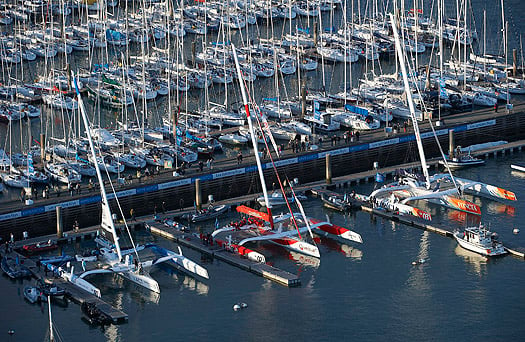
The MOD 70 fleet – plans are afoot to bring the fleet to Dun Laoghaire and moor them off the National Yacht Club at the Carlisle Pier
As previously reported on Afloat.ie, Dublin Bay welcomed its first MOD70 earlier this year when yachtsman Roland Jourdain tested his Veolia Environnement trimaran ahead of the Fastnet Race.
The Irish Times has more on the story HERE.
Marine Notice on Exemptions from EU Regulations for Recreational Water Craft
#NEWS UPDATE - A recent Marine Notice from the Department of Transport, Tourism and Sport (DTTAS) advises consumers, retailers and manufacturers on the types of craft to which the EU recreation water craft regulations do not apply.
In general recreational craft and related products must meet the essential safety, health, environmental protection and consumer protection requirements of the Recreational Craft Directive as set out in the Recreational Craft Regulations.
However, these regulations do not apply to craft intended solely for racing; canoes and kayaks; gondolas and pedalos; surfboards; historical water craft and replicas; experimental craft and ones built for own use; commercial craft; and a number of others.
These exceptions are however still subject to the EU's General Product Safety Directive.
Complete details are included in Marine Notice No 56 of 2011, a PDF of which is available to read and download HERE.
- Marine Notice
- water craft
- regulations
- EU
- Department of Transport, Tourism and Sport
- DTTAS
- consumers
- retailers
- manufacturers
- recreational craft
- Safety
- Health
- environmental protection
- Recreational Craft Directive
- Recreational Craft Regulations
- racing
- Canoes
- Kayaks
- gondolas
- pedalos
- surfboards
- historical
- replica
ICRA Hears Appeals for Greater Participation in Sailing
#SAILING – The tenth Annual ICRA Conference took place in Dun Laoghaire for the first time on 26th November in the same year ICRA was awarded the Mitsubishi Club of the Year trophy writes ICRA Commdore Barry Rose. It was a well attended event by a very representative group of sailors and club representatives from all Coasts of Ireland.
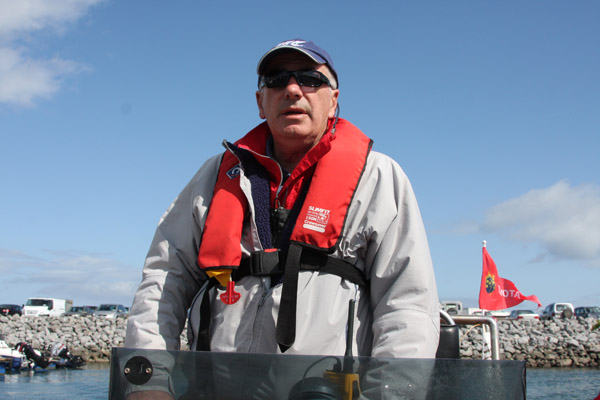
Barry Rose Chaired the ICRA Conference in Dun Laoghaire
The format this year created an inter active discussion in the morning session on Class Bands and the promotion of participation in Cruiser Racing in general. A lively, frank discussion took place with strong views being expressed by most present highlighting the problem of attracting crews to enable boats to go racing and creating access to allow those interested to go sailing to participate in the sport.
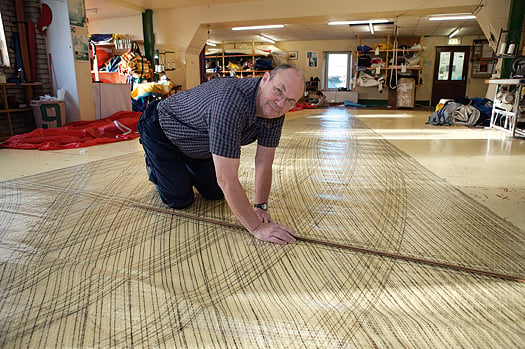
Des McWilliam spoke passionately about Irish sailing - Photo: Bob Bateman
Sailmaker Des McWilliam made a strong appeal that the future of the sport was threatened by difficulty in accessing getting afloat and sailing by the Club structures that were becoming more of a closed shop approach. Maurice O'Connell also spoke passionately on the same subject and examples were given of difficulties encountered both In Cork and Dublin in gaining access to participating in sailing and racing while boats were remaining tied up for lack of crews.
An understanding of the dilemma for the Clubs was also expressed by Flag Officers present in maintaining their facilities for those paying membership while encouraging new sailors to gain access at reasonable cost for a period.
It was agreed that all present would make every effort on a personal basis to encourage opportunities for those interested to go sailing to gain opportunities on boats and access to Club introductory offers.
ICRA will also explore creating an on line vehicle for available crews to register so boat owners gain opportunity to make contact.
There was also suggestions aired that bottom end of Class 1 should be included in Class 2 where all would have better racing.
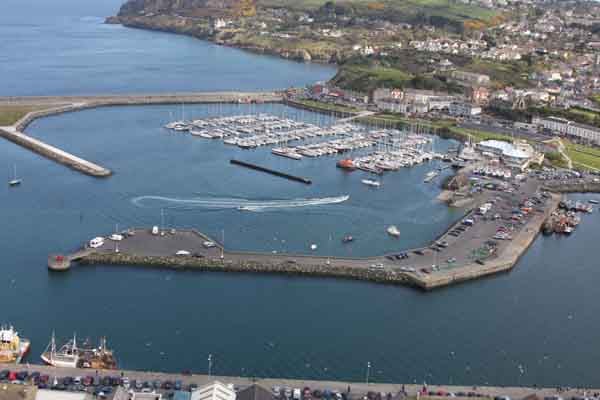
Howth, the venue for the 2012 ICRA Champs
The Royal Cork Yacht Club was complimented for running a top Class ICRA National Championships in June. Howth Yacht Club gave an update that arrangements are well progressed for an exciting ICRA National Championships in Howth 25th to 27th May 2012. The previous weekend will host the Corby Cup which will encourage those travelling to participate in Nationals and ISORA will run a feeder Race from Wales. It is hoped to announce a Sponsor shortly. Howth plan the first Race for 1600 hrs on Friday to avoid necessity for those travelling to stay over on Thursday.
The main feature of the afternoon session was a similar open forum with Race Officers Jack Roy, Henry Leonard and Harry Gallagher joining the top table for an open discussion on course types that sailors wanted and communications sailors would like with Race Officers. This was also a lively session with frank constructive exchanges which was of benefit to sailors and Race Officers alike.
The feeling of the meeting was that in addition to windward /Leeward courses sailors wanted a good variety of course types both at National Championship level but also at Regional events. Also those present strongly requested that boats over the line at starts be informed whenever possible but on strict understanding in Sailing Instructions that there be no redress in any circumstances relating to same against Race Officers.
Both these forums provided an excellent opportunity for those attending to air their views on all matters relating to Cruiser Racing and to offer ideas and this will be developed further for future conferences.
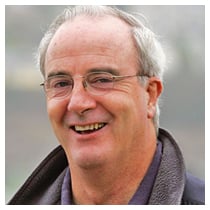
Commodore's Cup Captain Anthony O'Leary. Photo: Bob Bateman
The Commodore reported on efforts to form a team to defend the Commodore's Cup in 2012 and Anthony O'Leary brought the meeting up to date in changes to the event format and expressed confidence that there would be a positive response to ICRA 's request for declarations of interest to form a credible team to defend the Cup as is Ireland's responsibility.
Denis Noonan of Wicklow Sailing Club expressed the Clubs upset and disappointment that an Irish Club would arrange a competing event The Round Rockall Race from Galway starting on the same day as their Iconic Round Ireland Race. They outlined their plans for the 2012 Round Ireland Race and received support for their efforts from those attending. The RORC has increased their points scoring for the Round Ireland Race as further recognition of its standing in World offshore racing. Both ICRA and the ISA confirmed their support for the Round Ireland Race.

Pat Kelly's Storm is ICRA's Boat of the Year. Photo: Bob Bateman
The Conference finished with the presentation of the magnificent crystal ICRA Boat Of The Year trophy for 2011 to Pat Kelly's J 109 Storm who won the ICRA Nationals in Cork in June, The Cruiser Challenge in Dublin in August, The Howth Autumn Series and also travelled to the Scottish Series and Sovereigns Week. It was felt she embodied the spirit of a well campaigned ICRA cruiser racer. A week later Kelly became Afloat's Sailor of the month for November.
VOR Second Leg Cut Short Over Piracy Concerns
#VOLVO OCEAN RACE - The second leg of the Volvo Ocean Race from Cape Town to Dubai has been cut short by organisers as a result of the growing threat of piracy in the Indian Ocean, The Irish Times reports.
The six yachts competing will be protected by armed guards as they are shipped on a secret route to the United Arab Emirates due to piracy concerns.
The boats will be transported by ship from an undisclosed location to Sharjah in the Arabian Gulf, from where they will sprint to the finish line in Abu Dhabi.
All six teams are currently in Cape Town, with Team Sanya, PUMA and Abu Dhabi Ocean Racing hoping to get back in the race after retiring in the first leg.
As previously reported on Afloat.ie, NATO recently foiled a pirate attack on a Spanish fishing vessel between the Seychelles and the Somali coast.
The Irish Times has more on the story HERE.
Royal Alfred Yacht Club Revive the Superleague for 2012
#SAILING–A new sailing league for 2012 to bring an 'extra focus' to yacht racing in Dublin Bay was the talk of last night's Royal Alfred Yacht Club (RAYC) black-tie awards dinner in Dun Laoghaire. The RAYC racing club will re-launch the 'Superleague' concept – first staged in the 1990s – to a new generation of sailors in 2012 with the aim of 'rewarding the best boats, skippers and crews', across the whole season, in each class in Dublin Bay, the country's biggest sailing centre.
The Superleague will be open to all classes of keelboats in Dublin Bay. In 2011 there were 15 keelboat classes with 300 boats. Visitors from Howth or elsewhere will also be welcomed in to the league.
The Superleague will consist of 10 individual events/races - six club Regattas - Dun Laoghaire Motor Yacht Club, Royal Alfred Yacht Club, Howth Yacht Club, National Yacht Club, Royal Irish Yacht Club and Royal St George Yacht Club - together with four Dublin Bay Sailing Club Saturday races - 1 in May, July, August and September. There will be four discards with six results to count.
Royal Alfred Commodore Peter Beamish believes the Superleague will bring an extra focus to racing in Dublin Bay without adding to an already cluttered event fixture list. It will increase the incentive to all boats to participate in the individual events which make up the Superleague. The club will also be awarding crew prizes which they hope will help boats build and motivate crew panels.
The hope is to provide very close overall results with final results in the balance right up to the last race in the series.
Full details of the RAYC superleague are being finalised and will be available in mid-December.
World Yacht Racing Forum Planned for Portugal
Since its launch in 2008, the World Yacht Racing Forum has become the annual meeting place for leaders in the business of sailing and yacht racing to network and discuss ways in which the sport can be grown and improved globally.
Organised by Informa Yacht Group, the WYRF will once again reassemble the who's who of international yacht racing, including athletes, event organisers, sponsors, cities and venues. The two-day Forum will be held alongside the Yacht Racing Design & Technology Symposium, giving delegates the opportunity to meet high-profile design and technology experts from the race boat industry, and to discuss the latest research and trends in performance boat technology.
Now in its fourth year, the World Yacht Racing Forum is the leading international conference for the yacht racing industry. The 2011 edition of the event will welcome new experts and personalities from the yacht racing scene, and introduce a number of new discussion themes.
Key topics will include an insight into the sponsorship landscape and where sponsors are spending their money, a perspective on successful sponsorship strategies, cost-effective new media including digital, a focus on women in sailing, driving growth via active yacht club management, breaking down the bid process for cities and venues, an audience with the America's Cup teams and organisers, and much more!
Mirabaud & Cie, Private Bankers also returns to the World Yacht Racing Forum as Gold Sponsor of the forum and Presenting Sponsor of the Yacht Racing Images Exhibition launched at the forum in 2009. Mirabaud will present an award for the best yacht racing image of the year as voted by all participants of the forum. The exhibition will also be available online.
The World Yacht Racing Forum is now universally recognised as the platform used by the international yacht racing community to define and debate the sport's key issues, and propose new ideas aimed at improving its structures and commercial value.
Over 400 delegates are expected in the picturesque region of Estoril in December. Delegates can benefit from a 30% early-bird discount before 1 October by registering online at www.worldyachtracingforum.com <http://www.worldyachtracingforum.com>
Eight Teams Advance to Nations Cup Semifinals
Friday's conditions—a light southeasterly breeze that forced race officials to delay the first start until about 1 p.m.—were a marked change from the previous two days of racing that featured moderate to heavy winds and choppy seas.
In the open division, the semifinal berth came down to the wire in a race between Haddad (crew Mario Trindade, Victor Demaison) and Shawn Bennett (USA) who went into the final match tied with two wins each. Przemek Tarnacki (POL) finished with one win and Peter Wickwire (CAN) was winless in the round.
Goncalves (crew Mariana Lobato, Diane Neves) went 3-0 in the women's division repechage round robin. Genny Tulloch (USA) won two races, Juliana Senfft (BRA) won one race and Ru Wang (CHN) was winless in the round.
Following the repechage, sail-offs to determine placing from fifth down were held, and the most exciting race of the day was held during this round when Bennett and Tarnacki battled it out. Bennett drew a foul in the prestart and managed to pass Tarnacki going upwind. At the top mark, the teams went into a dial-up that carried them well past the mark. Bennett was able to break free and lead for the rest of the race, but still had to complete his penalty turn. His team was managed to get the turn in right at the line and cross just feet in front of Tarnacki for the win.
Jason Bemis, President of Sail Sheboygan, which is hosting the event at its facility optimized for match racing, said the competition has been even better than anticipated.
"We've had spectacular weather all week that has made for some great competition," Bemis said. "Today we had a little bit of a slow start but the breeze finally switched to the southeast and built for some great afternoon racing. Tomorrow's forecast looks good and we expect a large spectator fleet to be on hand for some fierce competition in the semifinals and finals."
Placements for those not moving onto the semifinals are:
Open Division (sailed in Sonars):
5th Shawn Bennett (USA, crew Dave Perry, Craig Healey)
6th Przemek Tarnacki (POL, crew Lukasz Wosinski, Maciej Zieminski)
7th Stratis Andreadis (GRE, crew Stelios Sotiriou, Theodoros Polychrondis
8th Peter Wickwire (CAN, crew Tim Bishop, Matt Christie)
9th Yasar Celal Tumse (TUR, crew Canberk Karahan, Berk Can Biren)
Women's Division (sailed in Elliott 6m's):
5th Genny Tulloch (USA, crew Alice Manard, Jenn Chamberlin)
6th Juliana Senftt (BRA, crew Gabriela Sa, Luciana Kopschitz)
7th Ru Wang (CHN, crew Pan Ting Ting, Li Xiao Ni)
8th Sharon Ferris-Choat (CAN crew Caroline Kaars Sijpesteijn, Joanne Prokop)
9th Katarzyna Pic (POL Antonina Zoltowska, Monika Kordek)
10th Dominique Provoyeur (RSA Penny Alison, Caitlin Moore)
Racing continues Saturday with the start of the semifinal round.
West Kirby Team on Top at Schull ISAF Worlds
At the end of racing on day two of the Sailing World Team Racing Championships in Schull Harbour top ranked British team West Kirby Hawks finished first in the pecking order. In an exciting head to head they smashed the early challenge of second ranked fellow countrymen, the British Universities Sailing Association (BUSA) team. BUSA has challenged strongly in the competition to date showing momentum and skill in putting together winning combinations but, in what was probably the best race in the competition so far, West Kirby Hawks came out on top with a 1, 2, 6 combination. USA Team Extreme, yesterday's leaders, maintained their excellent performance in the Championships, suffering just one defeat in the second day, bringing their tally in the competition so far to 20 wins from 22 races.
Ireland’s three teams competing in the senior event slipped into the bottom half of the 12-nation event yesterday, led by the Royal St George YC team.
This makes them joint leaders with West Kirby Hawks (GBR) with BUSA (GBR) and second USA team the Rockets from Newport, Rhode Island, in third and fourth positions. The best of the Irish teams are in seventh and eighth positions currently, but there is still a lot to play for, with another full round robin of racing to take place on day three, before the final places are decided.
In the Youth World Championship, the Spanish team from Barcelona maintained their top spot on the league table, suffering only one defeat in the second day of racing at the hands of West Kirby Youth, the top ranked British team. Irish Youth Champions, Schull Community College, sacrificed their joint top position, suffering two early defeats, the Spaniards gaining revenge for their defeat by Schull yesterday and West Kirby Youth also winning over them.
These three teams now dominate the Youth Championship table. Spain are in the top position with 12 wins from 14 races so far, Schull Community College next with 11 wins from 14 followed by British teams, West Kirby Youth and Sevenoaks, both with 9 from 14.
ISAF World Team Racing Gets Underway in Schull
Full championship racing got under way in Schull Harbour yesterday as twelve international sailing teams contest the ISAF Open World Team Racing Championship and eight compete for the Youth Worlds.
The first day of full competitive racing took place in perfect conditions with a strong easterly breeze,which gradually swung southeast , allowing for a full round robin of 96 scheduled races to be completed on the day. At this early stage of competition, the top four places in the Open Championship are occupied by American and British teams.
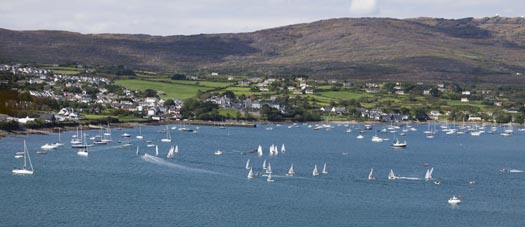
The American first team ,NYCC Team Extreme, this year's winners of the Wilson Trophy British Open Team Racing Championship, dominated exchanges with ten wins from eleven races. Two British teams, the British University Sailing Association (BUSA) team and West Kirby Hawks share the second and third spots with nine wins from ten races and USA team The Rockets from Newport, Rhode Island, in fourth place on the round robin table.
In the Youth Worlds section of the event, the Spanish team proved to be the surprise package on the first day , winning all their races until defeated by the Irish Youth Champions, Schull Community College, in their final race. This resulted in both these teams jointly topping the table at the the end of the first day's racing.
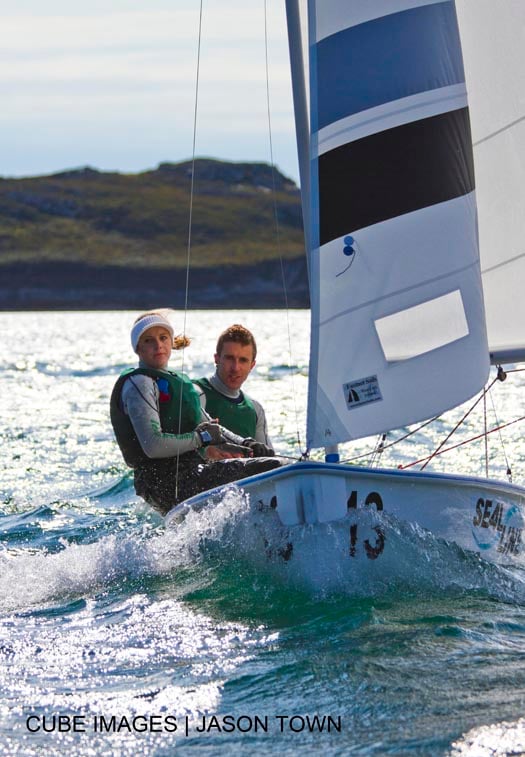
The Official Opening of the Championship took place on Tuesday Evening, performed by Mr. Tomasz Holc, Vice-president of the International Sailing Federation, ISAF, with the hoisting of the ISAF flag and the flags of the competing nations. A highlight of the evening was a performance for the assembled teams, officials, sponsors and guests by internationally famous accordion virtuoso, Liam O' Connor, of Lord of the Dance fame and now touring internationally with his own show.
Schull Welcomes World Team Racers
The seaside village of Schull was en fete yesterday as, in bright sunshine, locals and visitors alike turned out in huge numbers to welcome sailors from around the globe to a world event based in a village setting.
Already, the Australian team , early midweek arrivals, have expressed their wonder and appreciation at the West Cork welcome afforded them, the beauty of the Mizen Peninsula and its proximity to that iconic sailing landmark–the Fastnet Rock.
They have now been joined by teams from the USA, Great Britain, Italy, Spain, Japan, Thailand and Ireland to contest the ISAF World Team Racing Championships throughout this week.
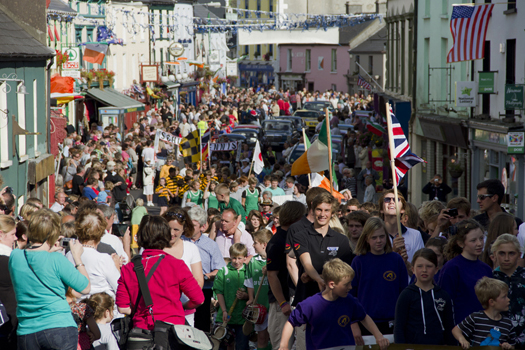
Schull village welcomes the ISAF Team Racing event yesterday. Photo: Brian Carlin. Scroll down for more photos.
The village was a riot of colour as the parade of nations made its way up the main street, with premises flying the flags of their adopted nations and their window displays imaginatively paying tribute to the visiting teams. The parade was led by ten vintage cars, with ten more bringing up the rear, and the ever popular Skibbereen Silver Band Providing the music.
The entourage reflected elements of the sporting, cultural and artistic life of the local area with groups representing Irish traditional music and dance, local youth and sports clubs and Schull Drama Club providing a particularly interactive and quirky element to the proceedings. The international teams, interspersed throughout the parade were treated to a rapturous welcoming reception from the kerbside audience which, judging by their responses, they thoroughly enjoyed.
At the reviewing stand an official welcome from the Schull community was extended by Schull And District Community Council Chairman, Sean Lannin. A charming touch was added to the occasion in the form of each participating country being welcomed in their own language by a native of that country now resident in West Cork, emphasising once again the cosmopilitan nature of the region's population.
The parade continued on its way to The Fastnet Marine and Outdoor Education Centre at Schull Community College where the teams were officially welcomed to the sailing venue by Tim O' Connor, college principal and chairman of the local organising team for the event and by Declan Hurley, Chairman of Cork Council's Western Committee, Cork County Council being one of the major sponsors of the Championship.
There followed a short Irish music and dance performance and a recital by the Skibbereen Silver Band in the spacious marquee erected at the scenic shoreline site.
An informal reception was enjoyed by visitors and community setting the tone for an exciting and enjoyable week both on the water and in the village.
Action on the water kicks off on Monday with a training and familiarisation day in the new and locally built TR3.6 metre dinghies. Practice Race Day takes place on Tuesday with Championship Racing on Wednesday, Thursday and Friday. World Youth Finals take place on Saturday and World Open Finals and Prizegiving Ceremony on Sunday, September 4.


























